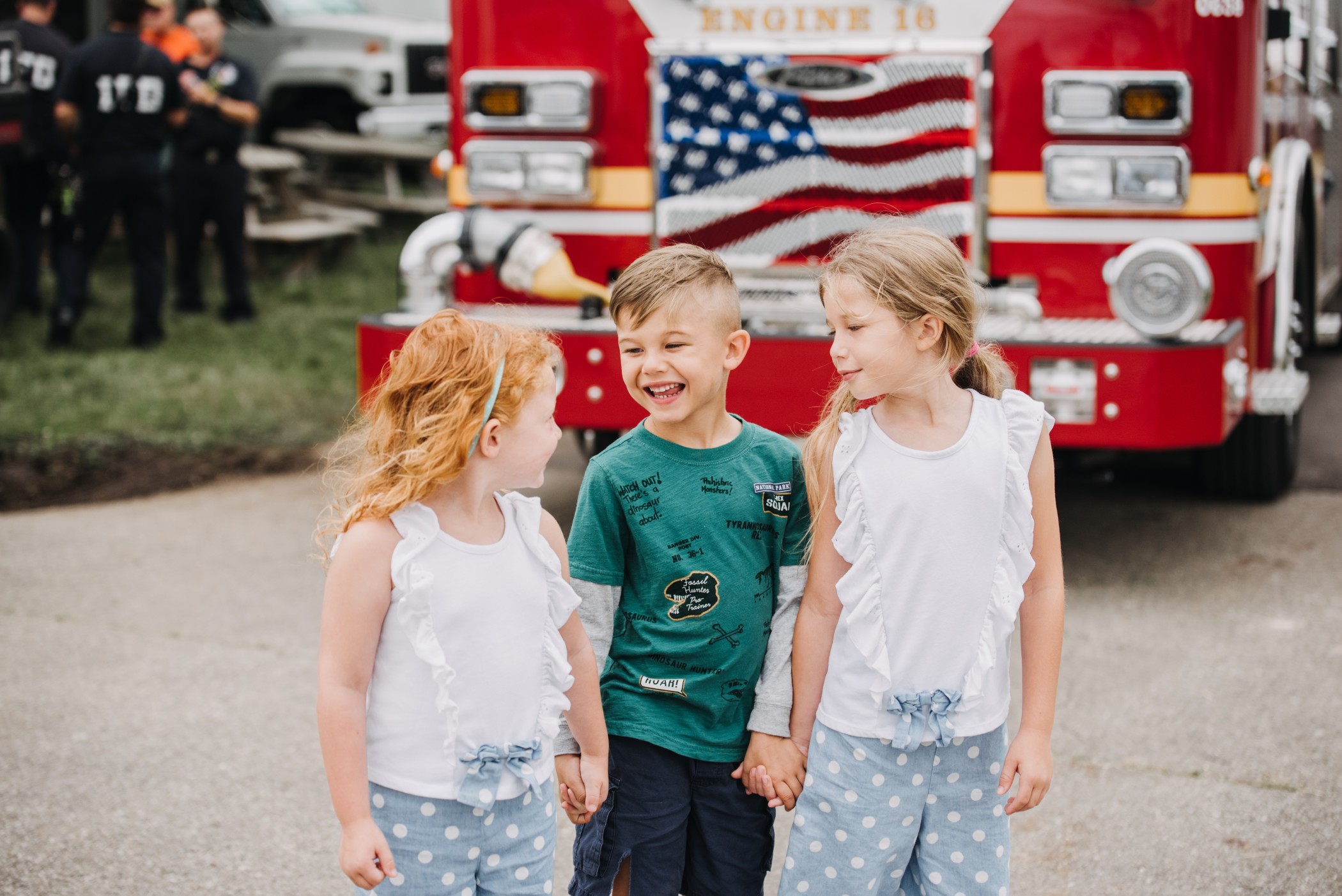
October 3rd through 9th is Fire Prevention Week. The theme for 2021 is “Learn the Sounds of Fire Safety,” which focuses on the different sounds made by smoke detectors and carbon monoxide alarms, as well as how to react when they go off.
For those with children, talking about fire safety is a common struggle. You never want to scare your child, but fire safety education is essential, and they need to know what to do in case of an emergency. The more knowledgeable your child is about fire safety, the better, and there are plenty of ways to communicate vital information without scaring them.
Talking to Your Child About Fire Safety
Fire is scary, even for adults, but instilling fear into your child will only make it difficult for them to react with a clear head. Treat home fires and fire safety with the seriousness and respect the topics deserve, but don’t purposely try to shock or frighten your child.
Instead, focus on what they should be doing to keep themselves and those around them safe. Demonstrate the sound of the smoke detector or fire alarm so they can associate it with the danger of a fire, and emphasize the importance of reacting immediately if they hear it go off. Change the batteries as needed to avoid scaring your child with a false alarm.
Remind your child that fire-starting tools are for adults only; they aren’t toys, and if your child sees them sitting out, they should tell a grownup. Children learn by example—if they see you playing with matches or lighters, they’re more likely to believe it’s safe to do the same.
Basic Fire Safety
This is a catch-all for the basic fire safety tips your child should keep in mind while reacting to a house fire, including:
- Stopping, dropping, and rolling if their clothes catch fire
- Touching a door handle before opening it to check for heat on the other side
- Staying low while moving out of the house to minimize smoke inhalation
- Covering their mouth and nose with a towel to minimize smoke inhalation
- Feeling their way out of the house with their hands if smoke makes it difficult to see
“Don’t Hide, Go Outside”
A child’s first instinct in a dangerous situation is often to hide. When teaching your child about fire safety, emphasize that the most important thing during a fire is getting outside—this needs to be their first priority. Their possessions are replaceable; they are not.
Have a Fire Escape Plan
During a house fire, your child’s panic can be eased if your family has a well-established plan. Working with your child, find escape routes out of your home, planning at least two ways out of every room in the house. This might mean using a fire escape or opening a window. Practice doing both with your children and make sure they understand these are measures to be used only in an emergency.
Establish a family meeting place at a safe distance from the house, like a mailbox or tree at the end of the driveway. In addition, make sure your child understands that once they’re outside of the building, they need to stay out. If a family member or pet is missing, your child should tell another adult or a firefighter. They should not, under any circumstances, go back into the building.
Once your plan is established, run a fire drill with your family with the goal of getting out in two minutes or less. Do this at least twice a year, or even better, run it on a monthly basis. The more you practice your fire safety plan, the more it will become second nature to your child, and the more they’ll feel prepared and confident in the event of a real fire.
Fire Prevention Week is the perfect opportunity to talk with your child about fire safety, and there is a multitude of resources out there to help you. Visit the National Fire Protection Association website for more information, and visit the Specialized Health and Safety blog for more articles on child safety education.

